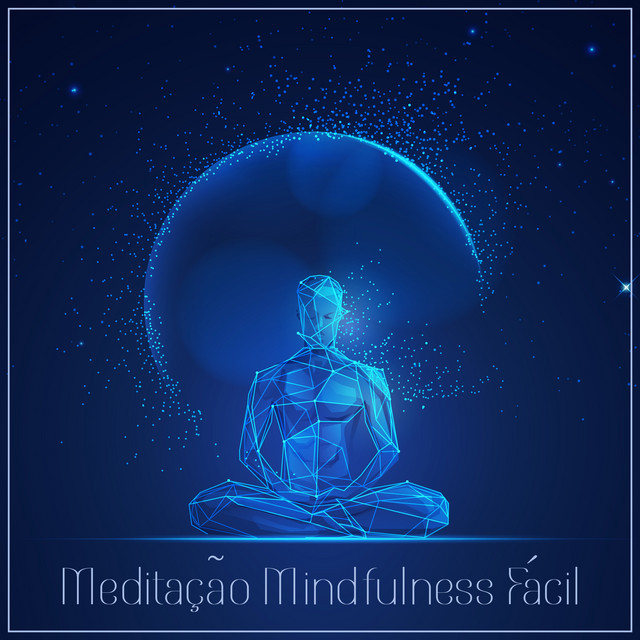
Headspace offers a range of guided meditations, making it a great choice for beginners interested in mindful breathing. There are many topics available, including sports, anger, compassion, stress management, sleep, and focus. You can also download audio courses to your smartphone to enjoy on-the-go. To get a feel for the style and meditation, you can listen to past sessions. Headspace also offers guided meditations. You can also access many other types meditation content through the app.
Headspace has meditations to address a wide range of topics. The app also offers a collection of meditation sessions that target specific topics. You can choose from a variety of topics, or you can select a program that addresses your specific goal. Sessions can last anywhere from 10 minutes to 20 minutes. Headspace is highly customizable and provides a variety of options for meditation at all levels. There are many alternatives to the paid app.

Headspace is not the right app for you if you don't feel comfortable sitting in silence and meditation. The app does NOT allow you to choose from background music or soundscapes. Meditations are completely quiet. The free app offers 90 different meditations. You can also explore all of them. After paying for the app, unlimited classes will be available to you. Once you've completed the free trial, you can purchase the paid subscription for more content and longer classes. Breethe offers more advanced features, longer meditations and no subscription fees.
Headspace offers a 10-day free trial and a membership. The course covers mindfulness basics, and hundreds of meditation exercises. You can meditate to rain, wind or cicadas. Headspace is an excellent option for beginners because you can meditate from anywhere. And the app is great for beginners and meditators who aren't too comfortable with sound.
Headspace is a free app that offers thousands of meditations and many different audio tracks. It is both for beginners and experienced practitioners. Meditation has many benefits. It can reduce anxiety and stress. It also improves your attention span and memory, which are all essential to your health. The app teaches you the basics of mindfulness and allows you to practice it anywhere, anytime. The free version includes educational videos and articles on meditation.

Headspace App offers a free trial, which includes 10 sessions. You can subscribe to more than one year of meditation courses. The app offers a wealth of content, from mindfulness to meditation exercises. You can also take the Basics course for free and see if this is something you like. You can sign up for a free trial of the app by visiting its website. The headspace app is available on the Play store and in the App store, and it is available for both Android and iOS devices.
FAQ
How does an antibiotic work?
Antibiotics are drugs which destroy harmful bacteria. The treatment of bacterial infections is done with antibiotics. There are many different types of antibiotics. Some are administered topically, while others can be taken orally.
People who have been infected with certain germs may need antibiotics. One example is if someone has had chickenpox and wants to prevent shingles. Penicillin might also be administered to someone with strep throat. This will help prevent the possibility of developing pneumonia.
A doctor should give antibiotics to children. Children are at greater risk than adults for developing serious side effects from taking antibiotics.
Diarrhea is one of the most common side effects of antibiotics. Other possible side effects include stomach cramps, nausea, vomiting, allergic reactions, headaches, dizziness, and rashes. These symptoms usually go away after treatment ends.
Is being cold bad for your immune system?
According to some, there are two types: people who love winter or those who hate it. You may wonder why you feel so bad when it's cold, regardless of whether you love it or hate it.
The reason is simple: Our bodies are made to function well in warm temperatures. We evolved to thrive in hot environments because of the abundance of food resources.
Today's environment is vastly different from the one our ancestors experienced. We spend more time indoors and are often exposed to extreme temperatures (cold or heat) and eat processed foods rather than fresh.
As a result, our bodies aren't used to such extremes anymore. It means that when we do go outdoors, we are often tired, sluggish or even sick.
However, there are some ways to reduce these effects. One way is to make sure that you stay well-hydrated throughout the day. Hydration is key to keeping your body well hydrated, flushing out toxins and keeping your system healthy.
A healthy diet is another important thing. Your body will stay at its best when you eat healthy foods. This is especially beneficial for those who spend extended periods of time inside.
Consider taking a few moments each morning to meditate. Meditation helps to calm your mind and body which can make it easier to deal stress and illness.
How can I reduce my blood pressure
You must first determine the cause of high blood pressure. You must then take steps towards reducing the problem. This could mean eating less salt, losing some weight, taking medication, and so on.
You also need to make sure you are getting enough exercise. Walking is a great alternative if you don't have the time or energy to exercise regularly.
If you're not happy with how much exercise you're doing, then you should consider joining a gym. A gym that has other members who are motivated by your goals will be a good choice. It's much easier to follow a routine if someone is with you at the gym.
What are the 7 tips to have a healthy life?
-
You should eat right
-
Exercise regularly
-
Sleep well
-
Get plenty of water.
-
Get enough sleep
-
Be happy
-
Smile often
What should my weight be for my age and height? BMI calculator and chart
Use a BMI calculator to determine how much weight is needed to lose. The healthy BMI range for a healthy person is 18.5 to 24.9. Aim to lose 10 pounds per month if your goal is to lose weight. Enter your weight and height into the BMI calculator.
This BMI chart can help you find out if or not you are obese.
Do I need to count calories?
Perhaps you are wondering what the best diet is for you. or "is counting calories necessary?" Well, the answer depends on several factors including your current health status, your personal goals, your preferences, and your overall lifestyle.
The Best Diet for me - Which One Is Right for You?
My current health status, personal goals, preferences, and overall lifestyle all play a role in choosing the right diet. There are many good and bad diets. Some work well for certain people while others don't. What should I do? What can I do to make the right decision?
This article aims at answering these questions. It begins by briefly describing the various diets available today. Then, the pros and cons of each type of diet are discussed. Finally, we'll look into how to choose the best one for you.
Let's first take a look at different diets.
Diet Types
There are three main types: low-fat, high-protein, or ketogenic. Let's look at each one briefly.
Low Fat Diets
A low-fat diet restricts fat intake. This is accomplished by decreasing the intake of saturated fats such as butter and cream cheese. These fats can be replaced with unsaturated fats like avocados and olive oil. Low fat diets are often recommended to those who wish to lose weight quickly. This diet can cause constipation, heartburn, and stomach problems. Vitamin deficiencies can also occur if the person doesn't get enough vitamins through their diet.
High Protein Diets
High-protein diets limit carbohydrates and favor proteins. These diets have higher protein levels than other diets. These diets can help increase muscle mass and decrease calories. However, they might not provide enough nutrition for those who need to eat frequently. They can also be very restrictive so they may not be suitable for everyone.
Ketogenic Diets
Also known as keto diets, ketogenic diets are also called keto diets. They are high in fat and moderate in protein and carbs. These foods are popular among athletes and bodybuilders as they allow them to train harder, longer and without becoming tired. You must adhere to all side effects, including fatigue, headaches, nausea and headaches.
Here are five ways to lead a healthy lifestyle.
Living a healthy lifestyle includes eating right, exercising regularly, getting enough sleep, managing stress, and having fun! Good eating habits include avoiding processed foods, sugar, unhealthy fats, and avoiding junk food. Exercise can help you burn calories and strengthen your muscles. Sleeping enough can improve memory and concentration. Stress management is a way to reduce anxiety levels and depression. Fun keeps us vibrant and young.
Statistics
- WHO recommends reducing saturated fats to less than 10% of total energy intake; reducing trans-fats to less than 1% of total energy intake; and replacing both saturated fats and trans-fats to unsaturated fats. (who.int)
- This article received 11 testimonials and 86% of readers who voted found it helpful, earning it our reader-approved status. (wikihow.com)
- Extra virgin olive oil may benefit heart health, as people who consume it have a lower risk for dying from heart attacks and strokes according to some evidence (57Trusted Source (healthline.com)
- In both adults and children, the intake of free sugars should be reduced to less than 10% of total energy intake. (who.int)
External Links
How To
What does the "vitamins” word mean?
Vitamins are organic substances found naturally in food. Vitamins are necessary for us to absorb nutrients in the foods we consume. Vitamins cannot be produced by the body. They must be acquired from food.
There are two types if vitamins: water soluble, and fat soluble. Water-soluble vitamins dissolve readily in water. You can find vitamin C,B1 or thiamine, B2 or riboflavin and B3 or niacin, B3/niacin, B6/pyridoxine, folic Acid, biotin and pantothenic Acid as examples. The liver and fat soluble vitamins are stored within the liver and in fatty tissue. Examples include vitamin D, E, K, A, and beta carotene.
Vitamins can be classified according to biological activity. There are eight major groups of vitamins:
-
A - vital for healthy growth.
-
C - vital for proper nerve function, and energy production.
-
D - necessary for healthy bones and teeth.
-
E is needed for good reproduction and vision.
-
K - essential for healthy muscles, nerves, and bones.
-
P - vital for building strong bones andteeth.
-
Q – aids digestion of iron and iron absorption
-
R – Required for the formation of red blood vessels.
The recommended daily allowance of vitamins (RDA), varies according to age, gender, physical condition, and other factors. The U.S. Food and Drug Administration has established the RDA values.
For example, the RDA for vitamin A is 400 micrograms per dayfor adults 19 years or older. For fetal development, pregnant women need 600 mg per day. Children ages 1-8 require 900 micrograms per day. Infants under one year of age require 700 micrograms per day, but this amount decreases to 500 micrograms per day between 9 months and 12 months of age.
Children aged 1-18 years need 800 micrograms daily, while children overweight require 1000 micrograms per days. Children who are severely obese or underweight will need 1200 micrograms each day.
Children aged 4-8 years old who have been diagnosed as having anemia require 2200 micrograms of vitamin C per day.
Adults over 50 years of age need 2000 micrograms per day for general health. Because of their higher nutrient needs, women who are pregnant or nursing need 3000 mg per day.
Adults over 70 need 1500 micrograms daily, as they lose 10% of their muscle every ten years.
Women who are pregnant or lactating need more than the RDA. Pregnant women need 4000 micrograms per dayduring pregnancy and 2500 micrograms per day after delivery. Breastfeeding mothers need 5000 micrograms per day when breast milk is being produced.